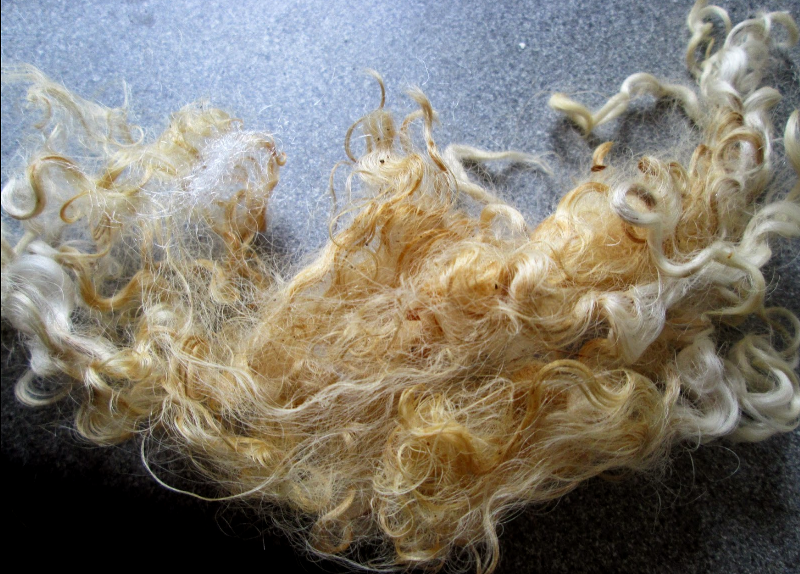
After a year-long wait to get your sheep’s fleece in your hands, you may lift it from the shearing floor to find it is unmistakably yellow. The yellow areas may look like beeswax—solid and waxy in texture—or more like urine stains. What is that yellow stuff? Can this fleece be saved?
It depends. Yellow wool, caused by yolk or canary stains, is a sign of two distinct issues. Yolk is fleece discoloration caused by a normally occurring pigment, while a canary stain is caused by bacterial contamination of the fleece. Both are much more common in fine-wool breeds than others.
It helps to know that these names actually mean the opposite of what they imply. Yolk refers to a lighter, pale, soft yellow while canary refers to a darker, brighter yellow. To remember this, I tell myself that, like an egg, yolk is a good thing. Canary stain points to a problem, like a canary in a coal mine.
Yolk
Yolk is, essentially, lanolin. As a certified wool classer, I was able to consult my handy American Sheep Industry Sheep Handbook, which says “The normal yolk color is due to a golden lanaurin pigment produced by suint glands that are associated with the primary wool follicles.” Yolk is not a stain because a normal amount of it washes out of your sheep’s fleece.
Canary Stain
Canary stain is a result of bacterial action in wool under wet and humid conditions, which is why a fleece with it may smell a bit yeasty. It does not wash out. For this reason, canary stain is considered a contaminant by the wool industry. It is a gummy, waxy, sometimes even hardened substance that should be skirted out because it does not wash out and does not take dye well.
According to my handbook, canary stain is “caused by a mild dermatitis brought about by continued wetting of the skin of the sheep. The affected skin releases an exudate that spreads over the skin surface, providing good conditions for the growth of bacteria. … Susceptibility to this condition depends upon the wetting and drying behavior of the fleece and the sensitivity of the skin to moisture.”
If you notice canary stain in the same sheep each year, you may wish to refrain from breeding them.
Peach-Colored Stains
If you see a color more peach than lemon in a fleece, it’s a different thing. A peach-colored stain is usually caused by wool rot and, unfortunately, is wool best sent to the compost pile.
Wash Your Sheep’s Fleece
Don’t assume a fleece with either problem is a goner. With any stain, you can always wash a small section of fleece to see if a stain comes out before throwing a whole fleece away. If you’ve purchased a sheep’s fleece with canary stain, wash it to stop the bacteria from continuing to operate. Washing with soap will kill the organism that causes the problem, even if it doesn’t fix or remove the existing yellow.




